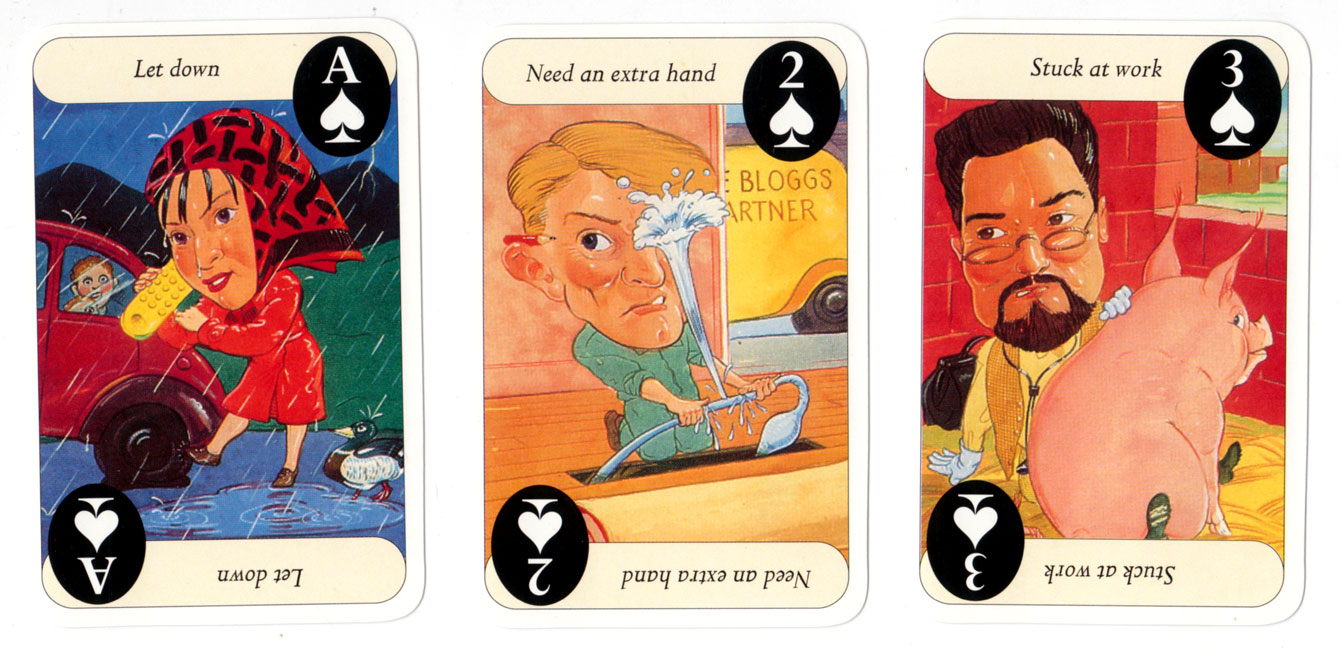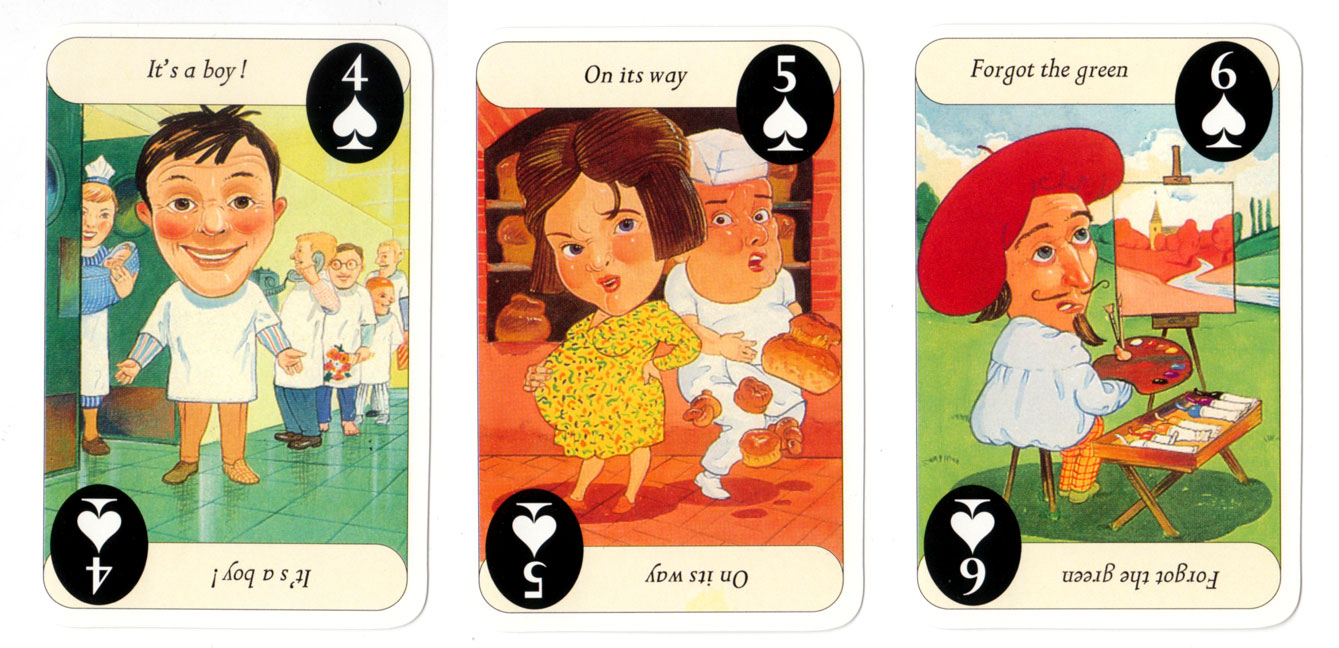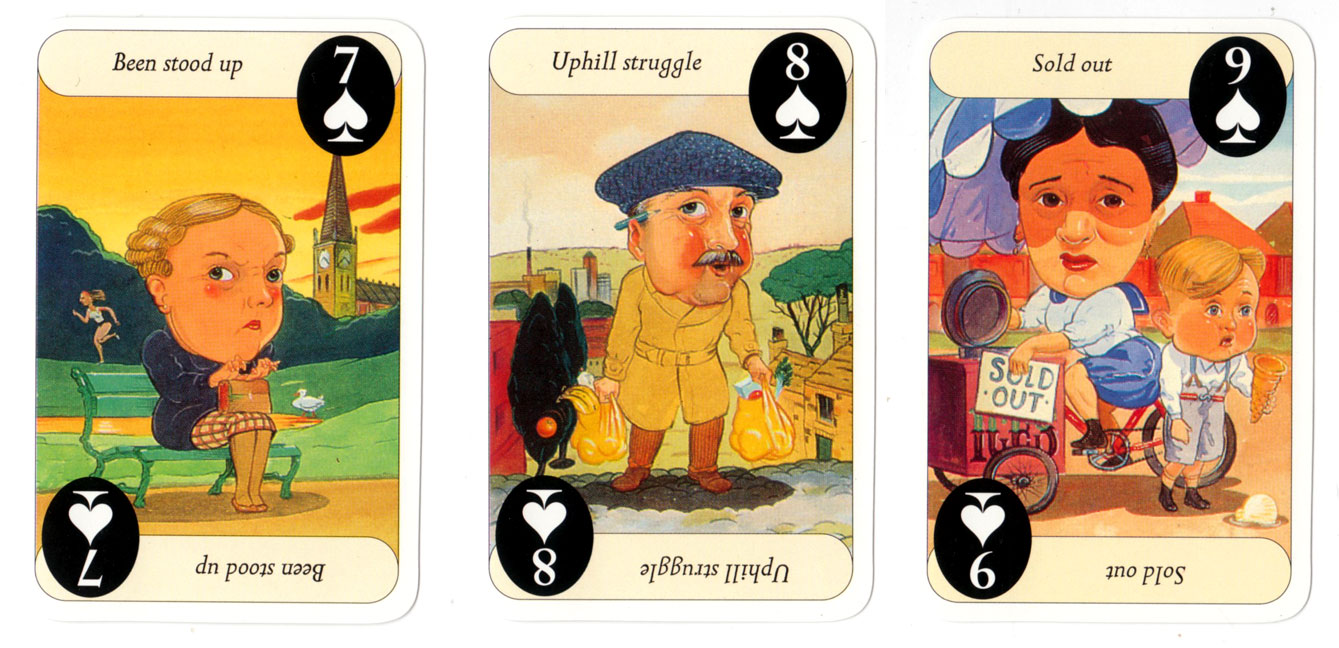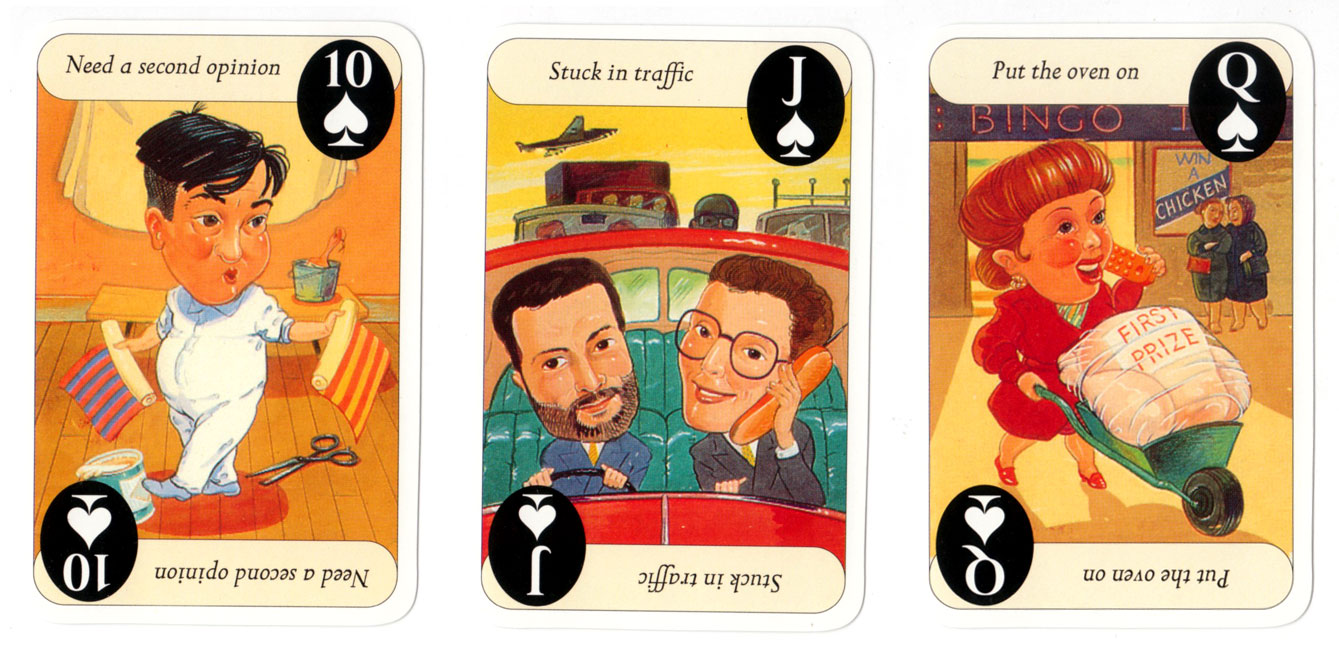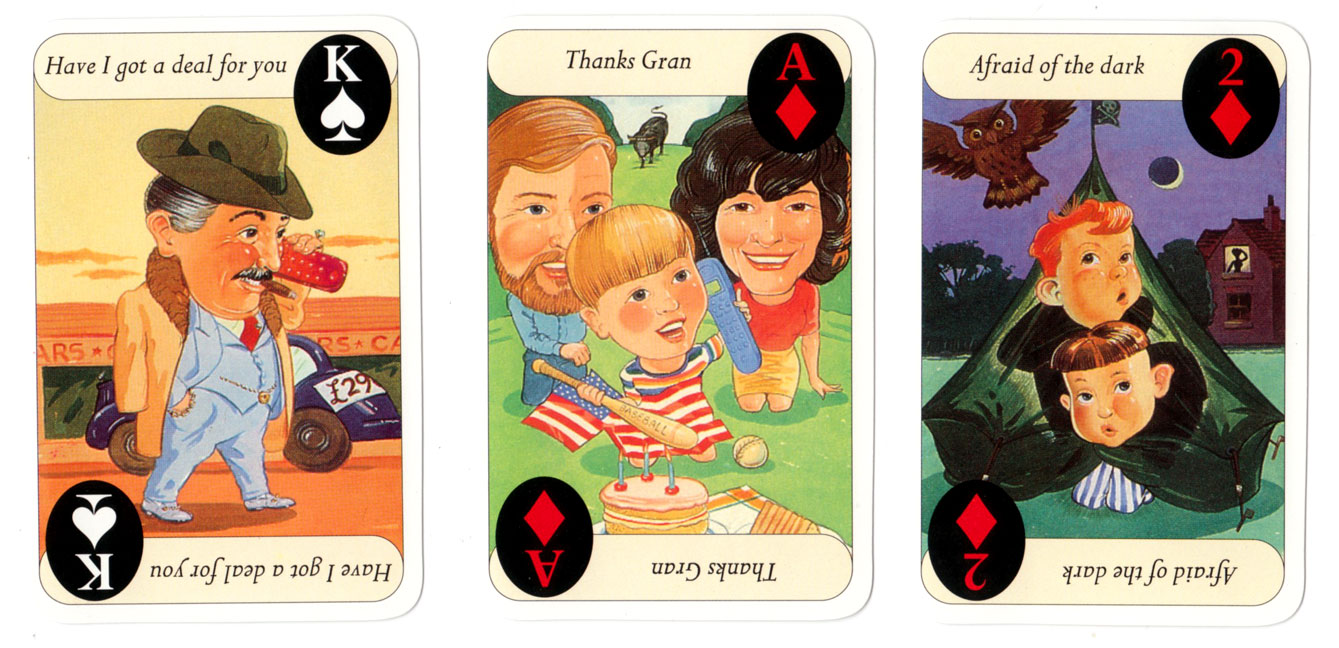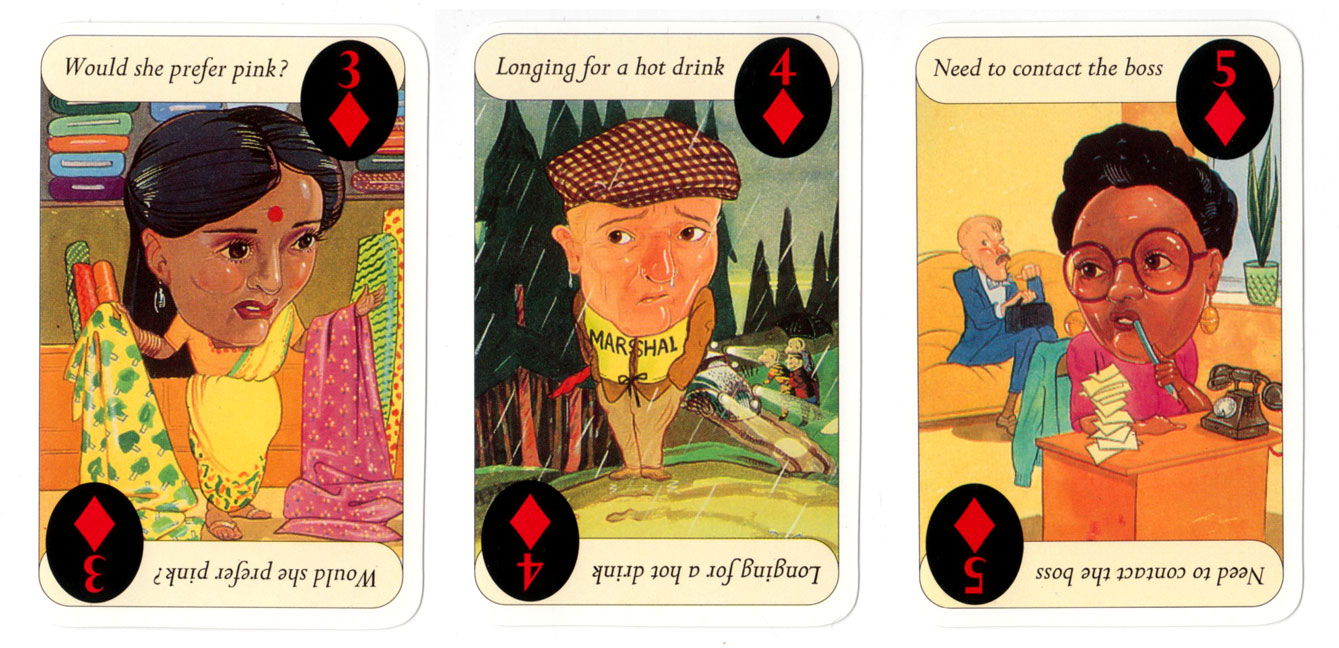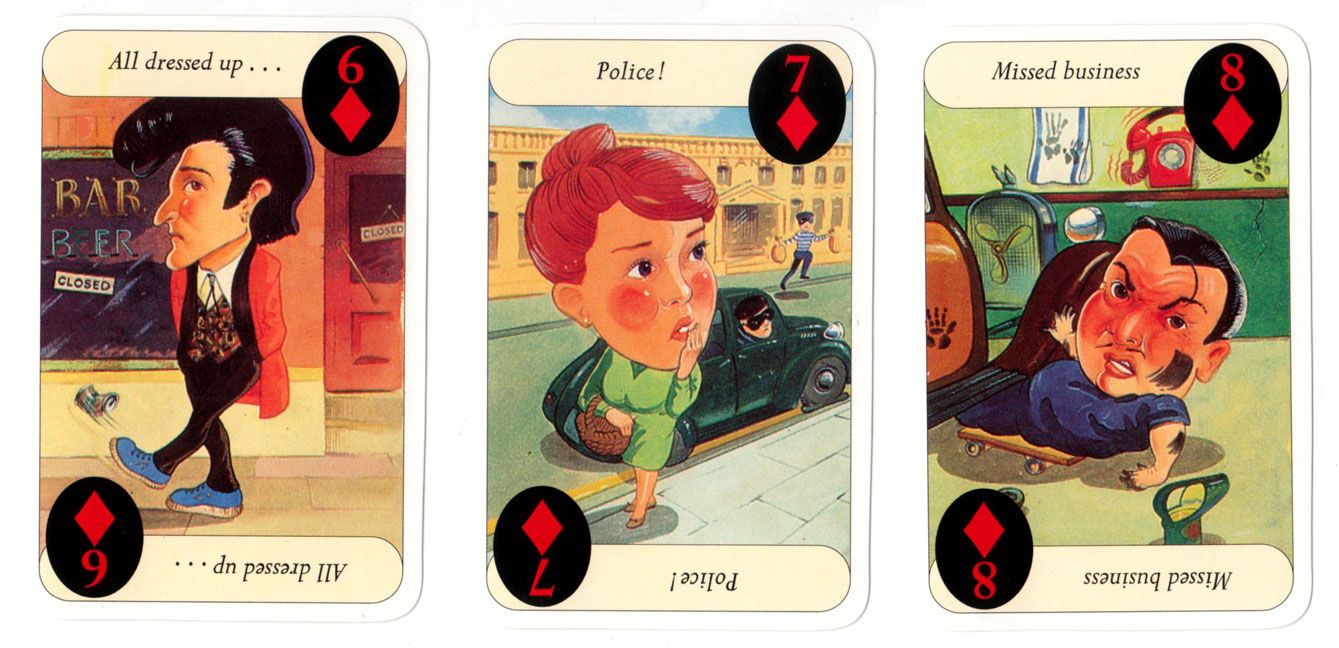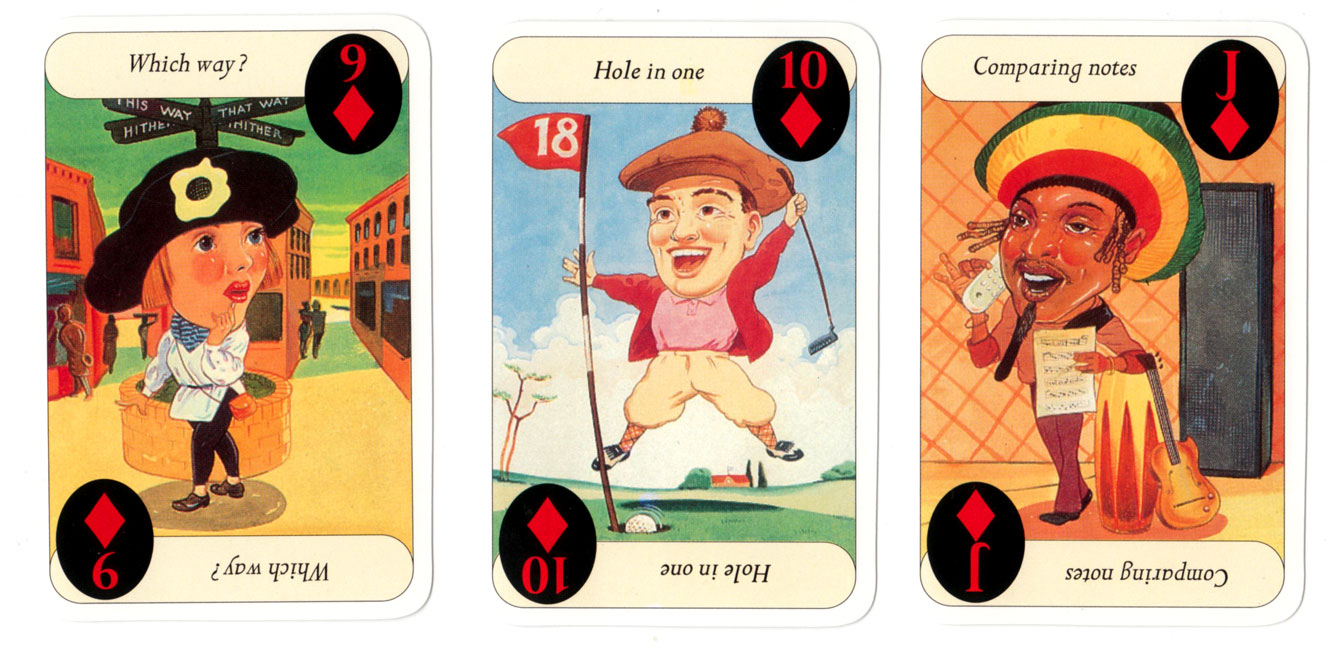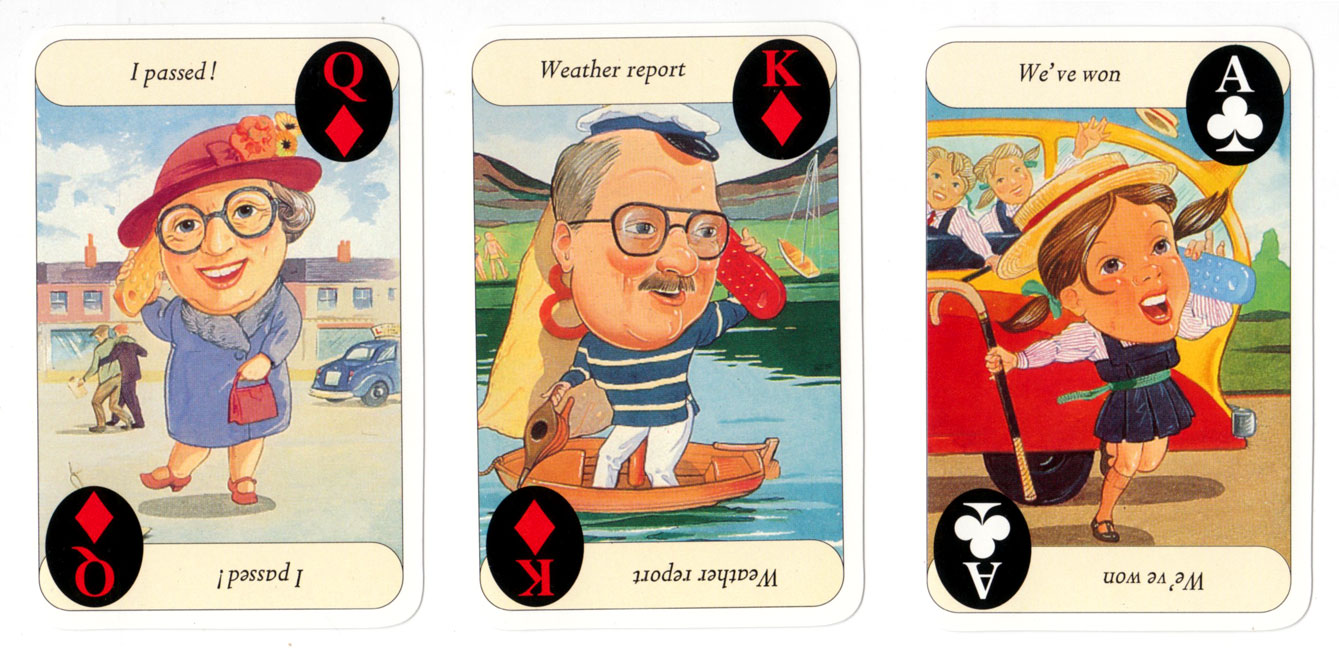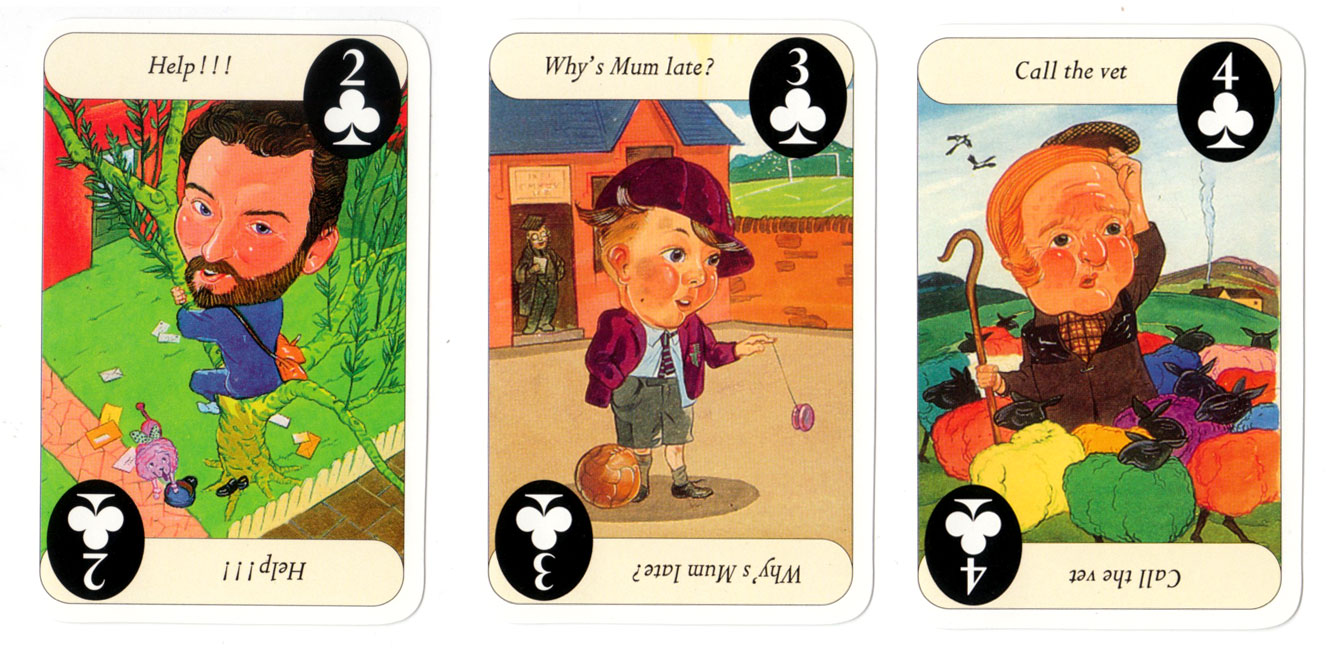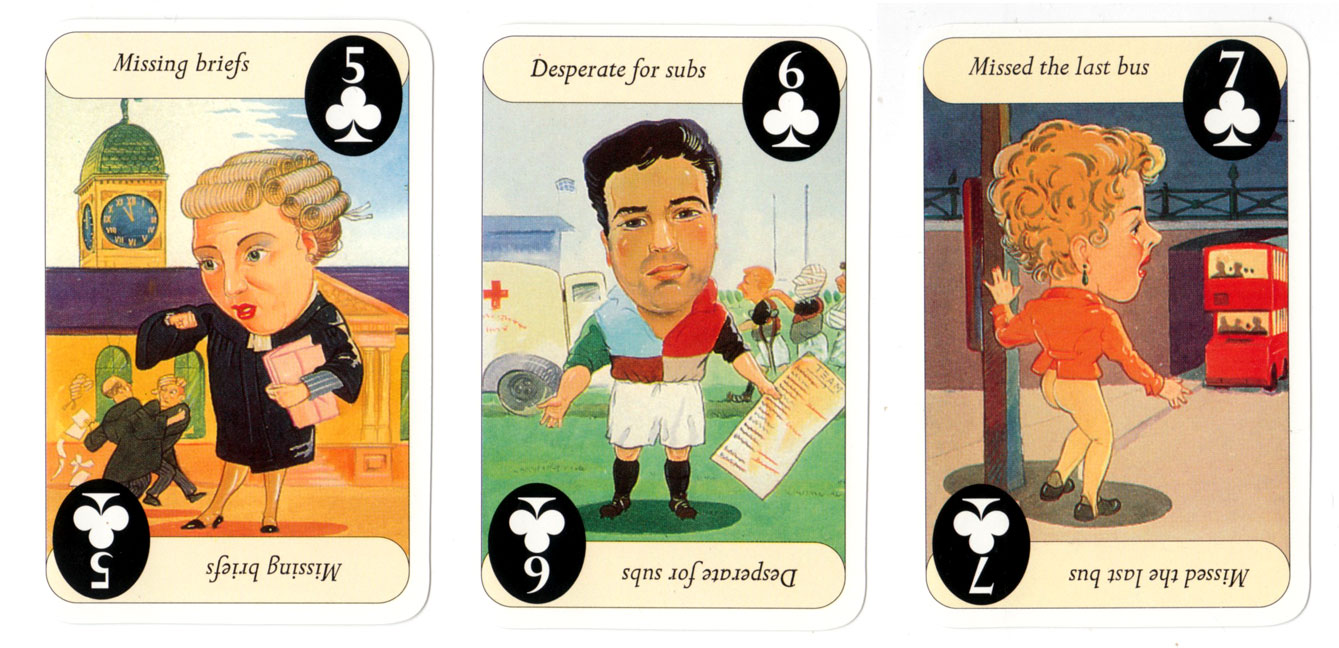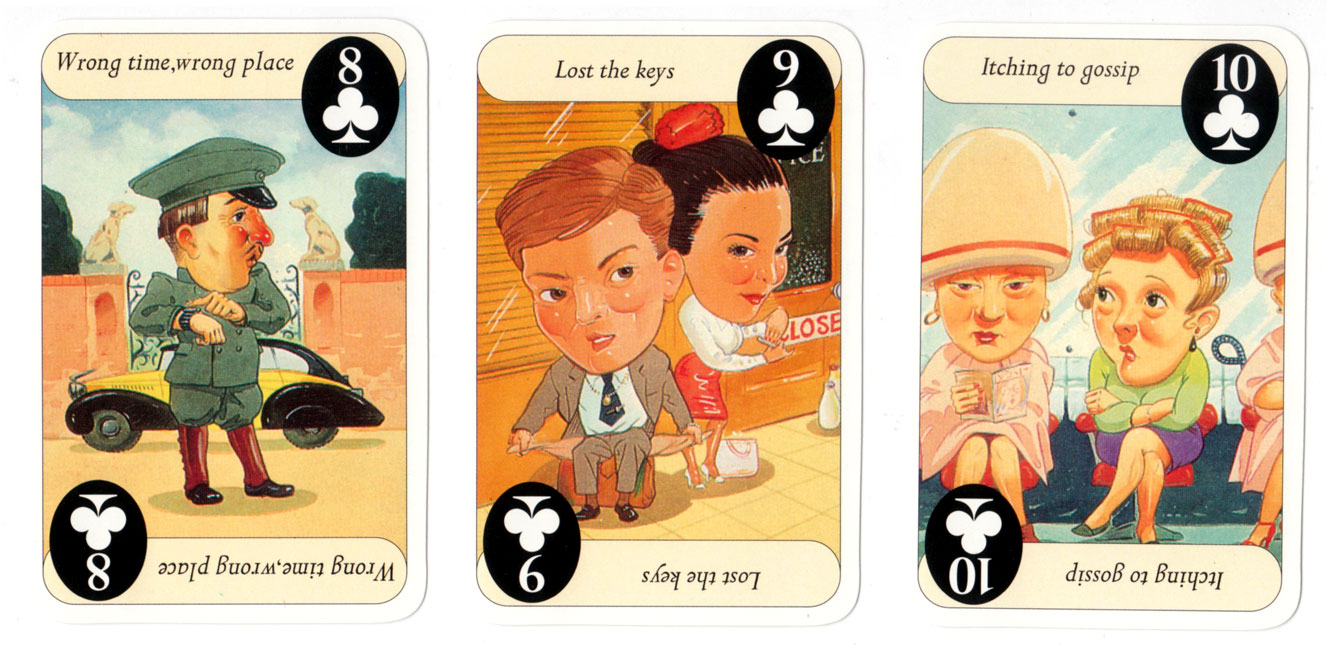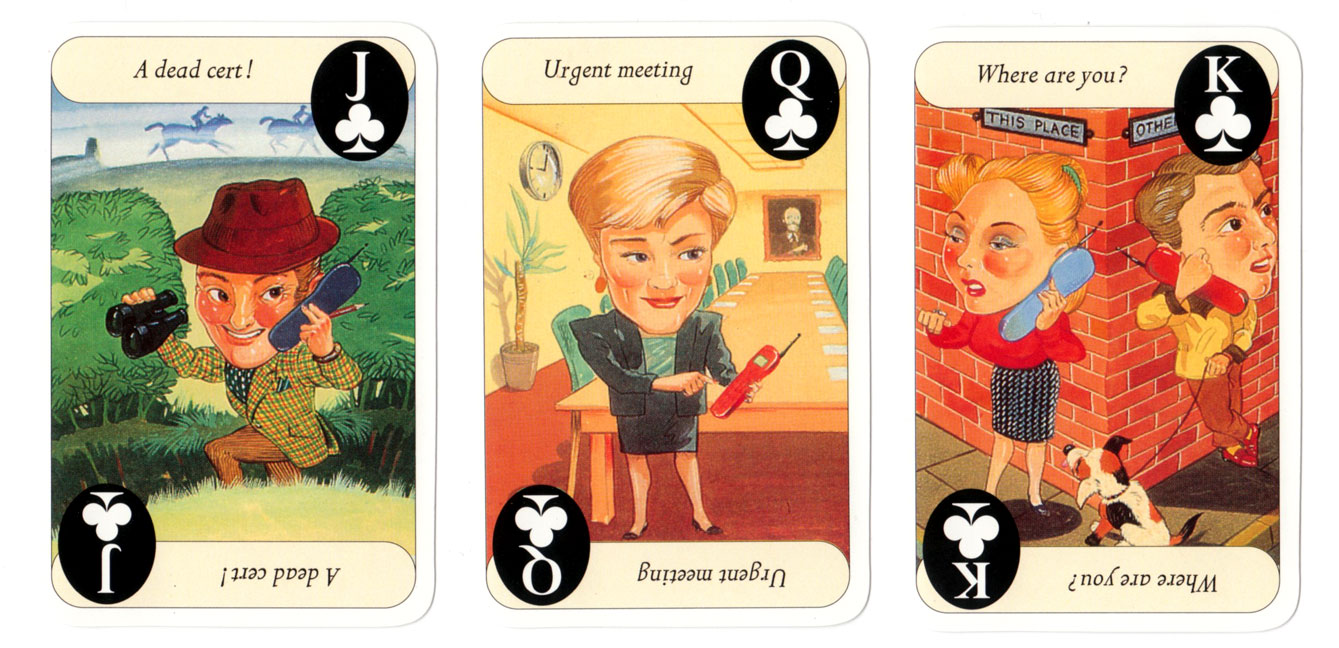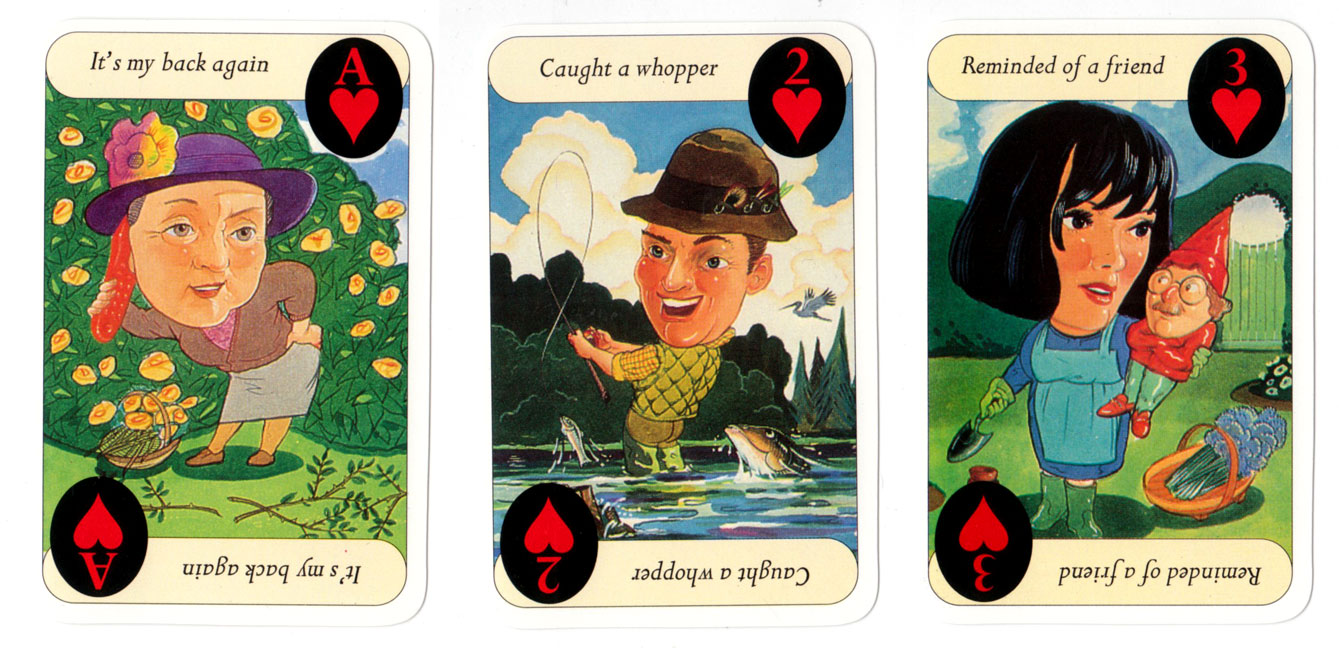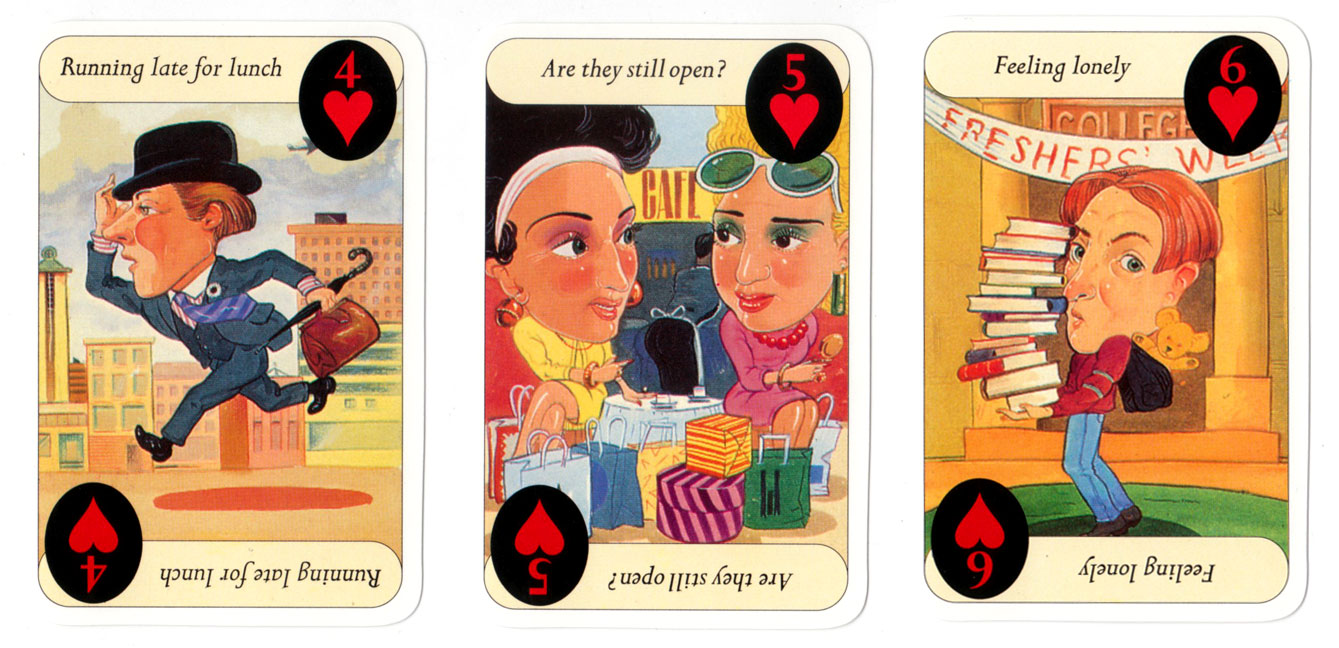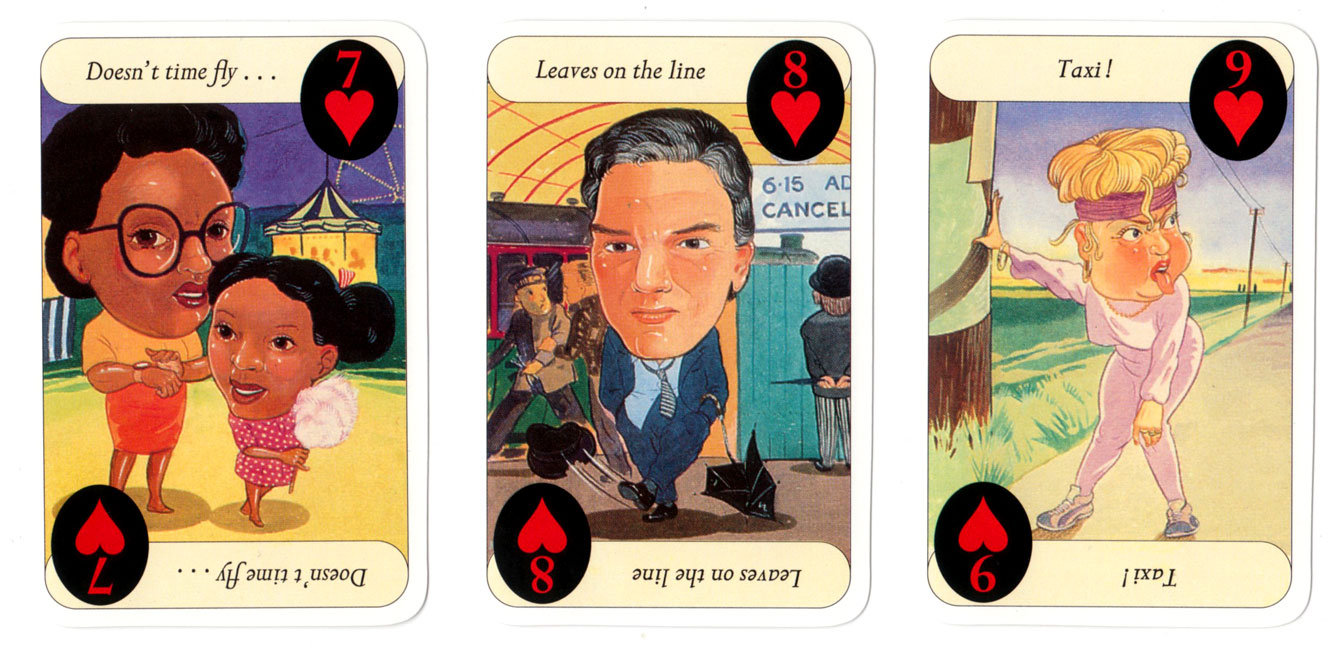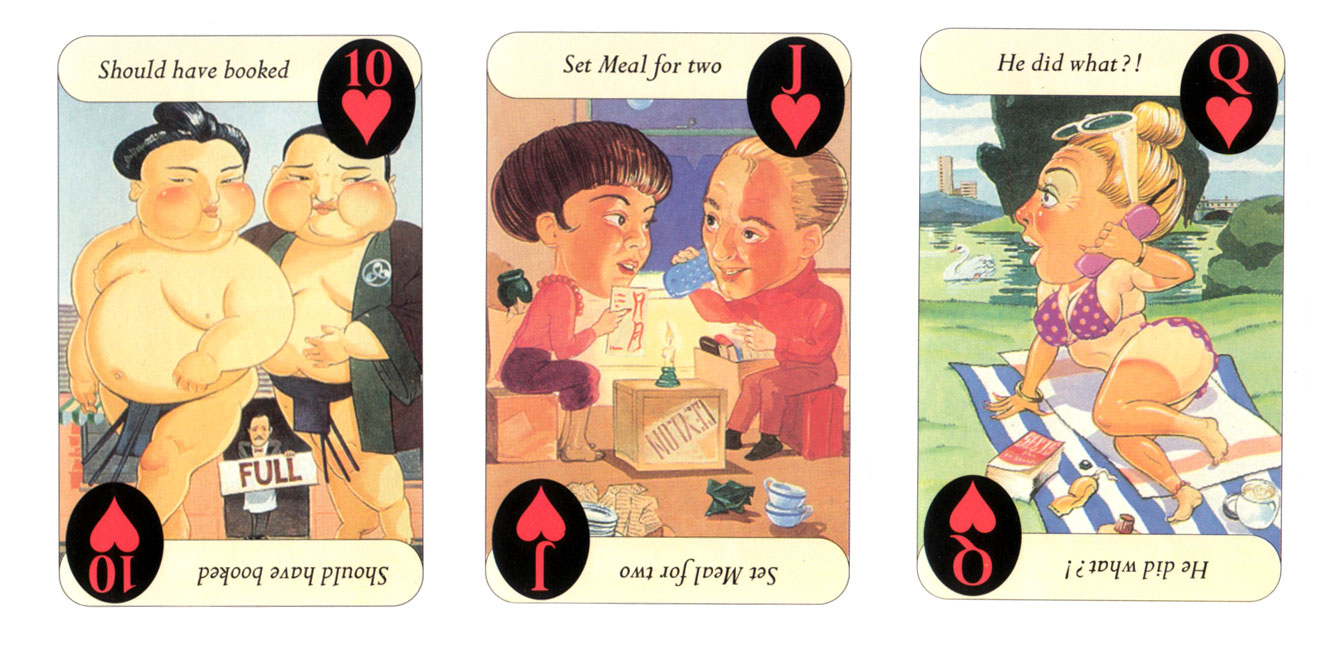Mercury One-2-One Situations
Mercury ‘One-2-One Situations’ playing cards published by Mercury Communications.
Mercury Communications was formed in 1981 as a subsidiary of Cable & Wireless and for a while became the cutting edge of the rapidly-expanding telecoms sector, with their eye-catching payphone kiosks. Mercury One-2-One became the world’s first digital mobile phone network which would revolutionise communications through text messaging and smaller handsets. By 1997, however, the Mercury name had disappeared in an amalgamation of UK operators. Its legacy lived on through its successor Cable & Wireless Communications and in the Mercury Music Prize.
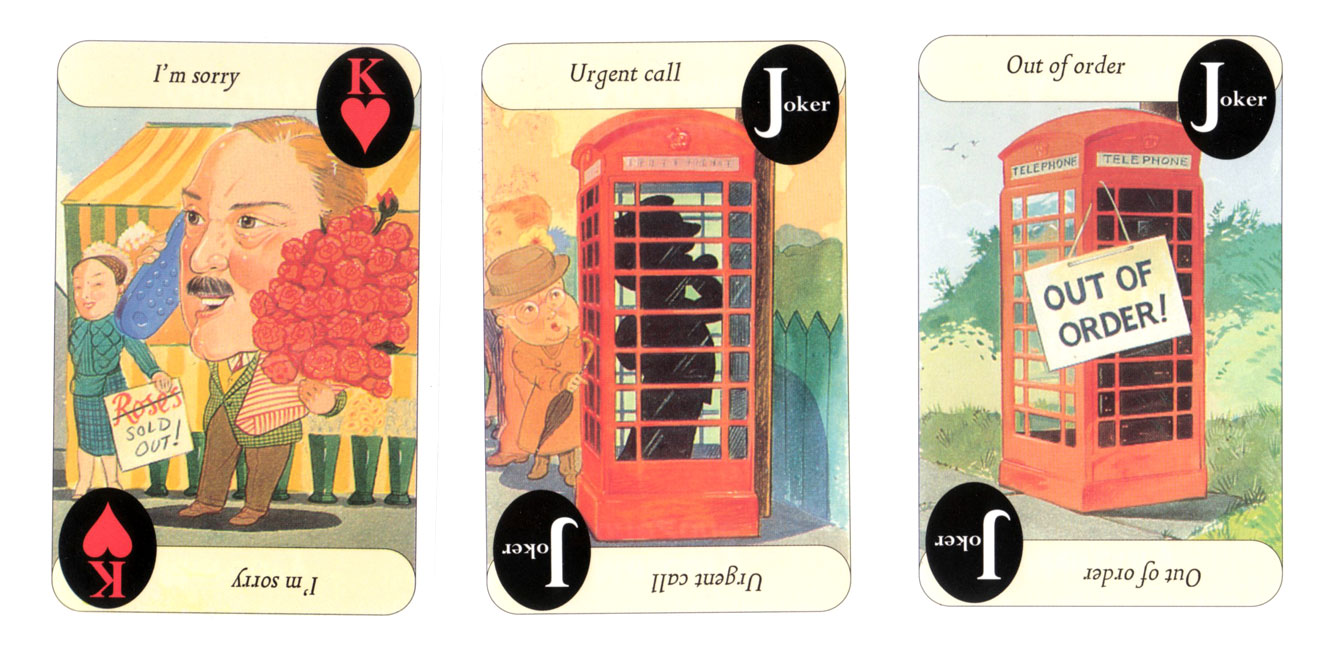
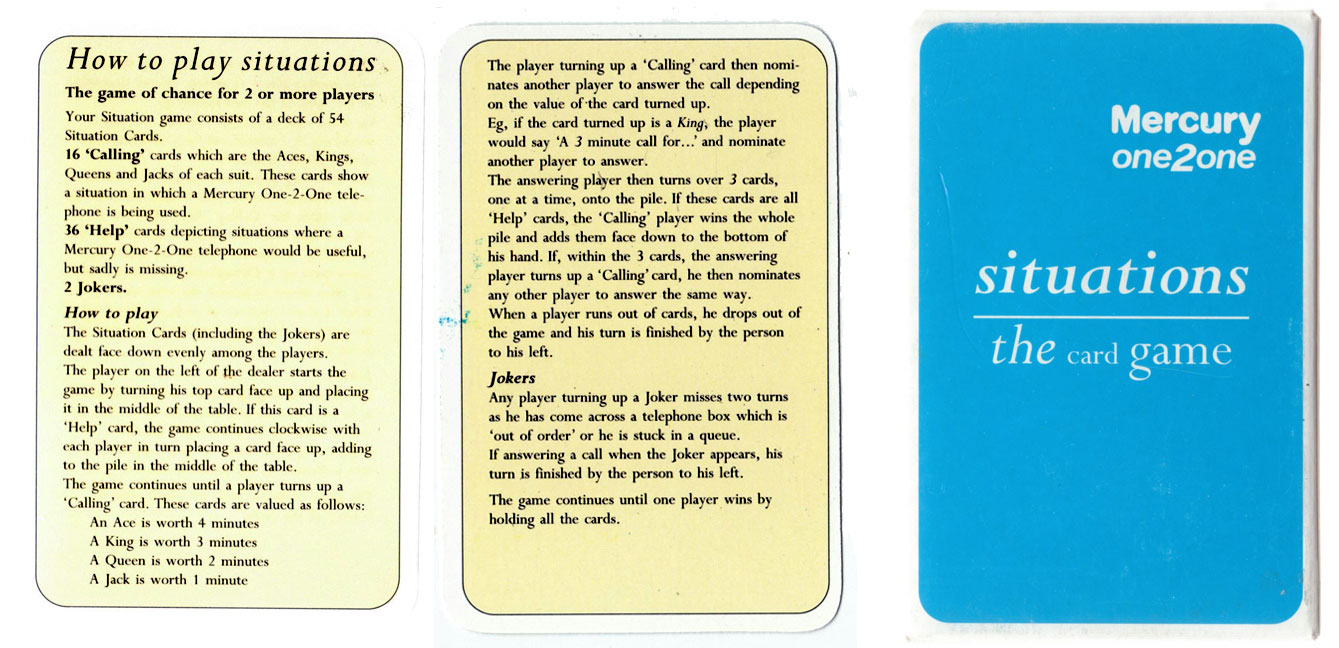
Above: Mercury ‘One-2-One Situations’ playing cards published by Mercury Communications, 52 cards + 2 jokers + 2 rules cards in box (click the rules to zoom). Images courtesy Rex Pitts.
By Rex Pitts (1940-2021)
United Kingdom • Member since January 30, 2009
Rex's main interest was in card games, because, he said, they were cheap and easy to get hold of in his early days of collecting. He is well known for his extensive knowledge of Pepys games and his book is on the bookshelves of many.
His other interest was non-standard playing cards. He also had collections of sheet music, music CDs, models of London buses, London Transport timetables and maps and other objects that intrigued him.
Rex had a chequered career at school. He was expelled twice, on one occasion for smoking! Despite this he trained as a radio engineer and worked for the BBC in the World Service.
Later he moved into sales and worked for a firm that made all kinds of packaging, a job he enjoyed until his retirement. He became an expert on boxes and would always investigate those that held his cards. He could always recognize a box made for Pepys, which were the same as those of Alf Cooke’s Universal Playing Card Company, who printed the card games. This interest changed into an ability to make and mend boxes, which he did with great dexterity. He loved this kind of handicraft work.
His dexterity of hand and eye soon led to his making card games of his own design. He spent hours and hours carefully cutting them out and colouring them by hand.

Related Articles
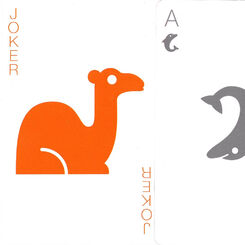
Orange: Great Value, Free Rewards
“Orange: Great Value, Free Rewards” promotional playing cards published by Orange UK.
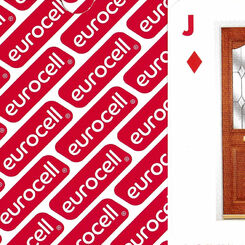
Eurocell® playing cards
Promotional playing cards produced by Eurocell® (UPVC window, door, conservatory and roofline system...
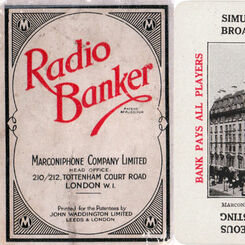
Radio Banker
Radio Banker by John Waddington Ltd for Marconiphone Co Ltd.
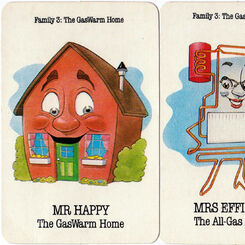
Gas Warm Homes
Gas Warm Homes Happy Families game published by British Gas, c.1980.

Dundas & Wilson Deal Winners
“Deal Winners” promotional pack for Dundas & Wilson law firm.
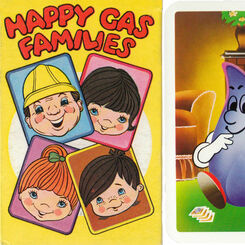
Happy Gas Families
Happy Gas Families published by British Gas, c.1985.
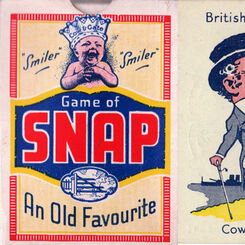
Cow & Gate ‘Snap’
Cow & Gate ‘Snap’ featuring Cow & Gate Baby Milk Food, 1935.
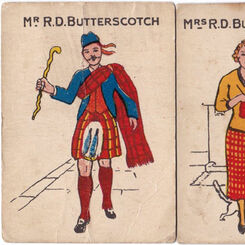
Parkinson’s Happy Families
Parkinson’s Happy Families published by Parkinson’s of Doncaster, confectioners established in the e...
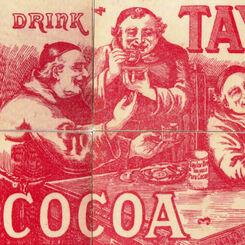
Adverto
Adverto card game published by Adverto Publishing Company of Stratford, London, c.1910.
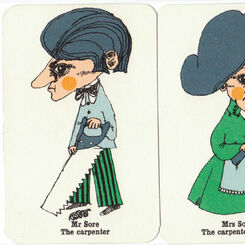
Davenol Cough Linctus
Davenol Cough Linctus Happy Families published by Wyeth Pharmaceuticals.
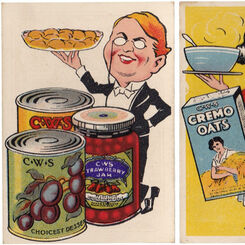
C.W.S. ‘Game of Snap’
C.W.S. ‘Game of Snap’ advertising household products, Manchester (UK), 1930s.
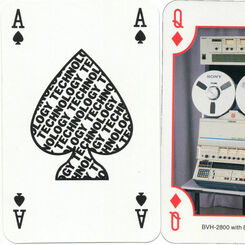
Sony IBC’86
Sony IBC’86 complimentary pack showcasing latest electronic and digital equipment as it stood in 198...
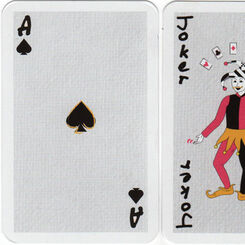
Giffgaff
Giffgaff mobile network playing cards, 2015.

Breedon Press Ltd
Playing cards advertising Sunspel underwear printed by the Breedon Press Ltd, Nottingham, c.1950

Porterprint Ltd
Porterprint was a printing business based in Leeds (UK) which manufactured playing cards during the ...
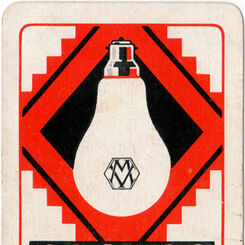
Brighter Families
“Brighter Families” promotional card game for Cosmos Lamps (Metrovick), 1930
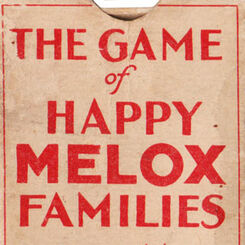
Happy Melox Families
The “Game of Happy Melox Families” was published by G. Clarke & Son of Thomas Street, London, in 192...
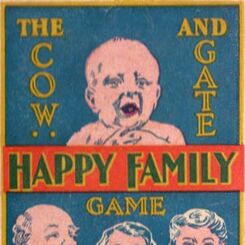
Cow & Gate Happy Family Game
Cow and Gate Happy Family game was issued around 1928 to promote nutrition products.

Astra Games
Astra Games was a subsidiary of the McCorquodale Group of Companies, producing playing cards during ...

Waddington’s 1933 Trade Brochure
Waddington’s 1933 Trade Brochure.
Most Popular
Our top articles from the past 60 days


